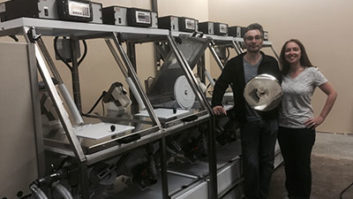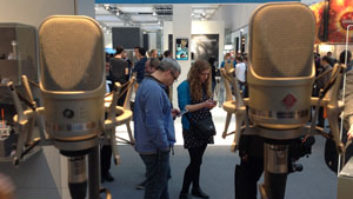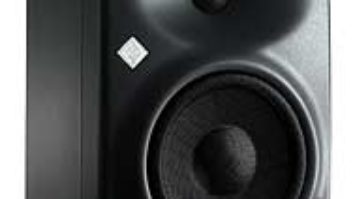LAWSON AIR
October 2003—The Lawson AIR mic is a
large-diaphragm, hypercardioid, 48V, phantom-poweredcondenser mic with
a tailored response to specifically complement the human voice. The AIR
mic features a new capsule design by Gene Lawson. Frequency range is
20-20k Hz. Polar pattern: hypercardioid. Sensitivity @ 1 kHz: 22 mV @ 1
Pascal (94dB SPL). Max SPL (1 kHz/1%): 138 dB. EIN: 20 dBA. Rated
impedance: 150 ohms. Power supply: 48V phantom.
LAWSON L47P MK II
August 2003—The long-popular L47MP from Lawson Microphones
recently received some significant upgrades. Among several enhancements
in the new L47MP Mark II ($1,995 factory direct) is the conversion to a
dual-tube topology with a custom Lundahl audio transformer for lower
noise and greater transparency. Also added is an externally switchable,
cardioid-only function that is easily accessible without disassembling
the mic. A cool, new blue LED inside the head indicates the L47MP Mark
II is in Multipattern mode. Also new are an LF contour switch with a
-6dB/octave roll-off starting at 100 Hz and a new -10dB pad. A
black-platinum PVD finish is now available, and the power supply has a
hard granite finish. Cardioid, omni, figure-8 and infinite intermediate
patterns are selectable at the power supply.
LAWSON L251
October 2000—Vacuum tube condenser microphone featuring a
reproduction of the ELAM 251 capsule, the Lawson L251 captures the
character of the ELAM 251—a rare vintage microphone renowned and
coveted for its sparkling airy highs and warm solid lows. The L251
features a true torroidal state-of-the-art output transformer
exhibiting unparalleled level handling capability, vanishing distortion
and extended frequency response, low-frequency contour control,
variable -10dB pad and continuously variable patterns. TO READ THE REVIEW, CLICK HERE.





